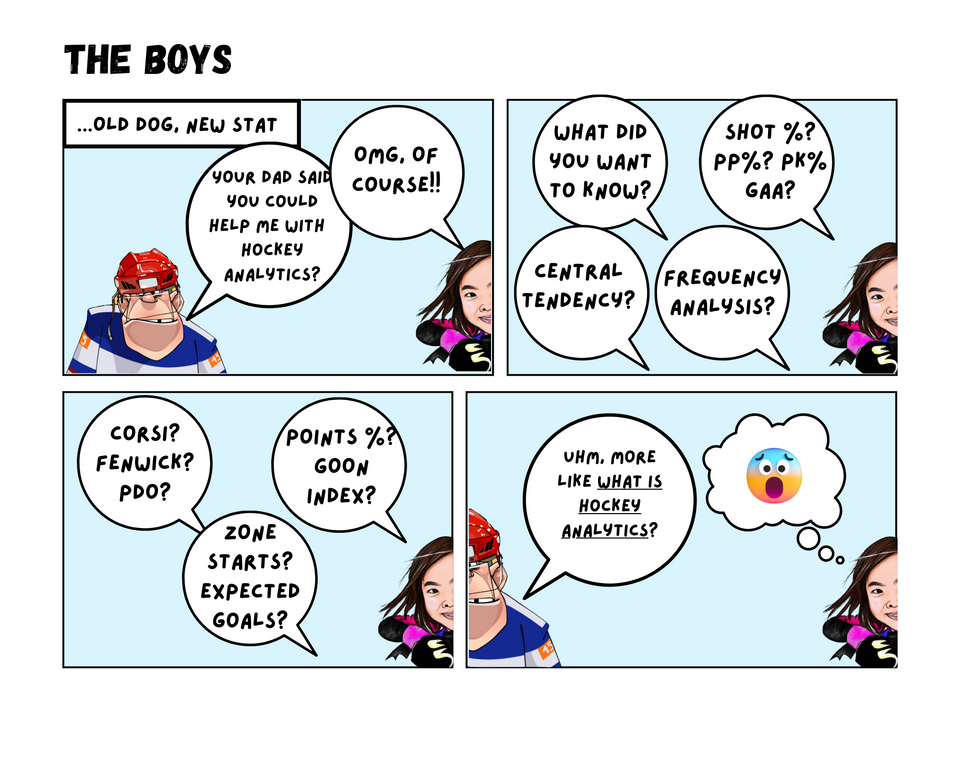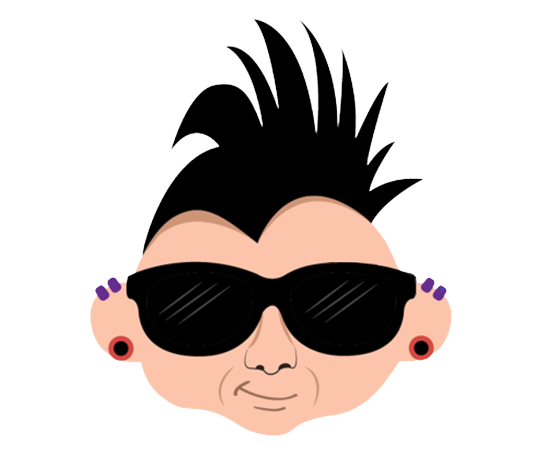What is Hockey Analytics?

In this Edition
- What is Hockey Analytics?
- What are Types of Hockey Analyses?
- What are Examples of Hockey Analytics?
- Who uses Hockey Analytics?
What is Hockey Analytics?
Hockey is a dynamic and fast-paced sport, blending skill, strategy, and teamwork. With each passing year, the role of analytics in hockey has grown in prominence as has the availability of hockey data. Hockey analytics refers to the application of statistical and data-driven methods to analyze various aspects of the game, aiming to gain insights, make informed decisions, and ultimately improve performance at the player and team level. More generally towards analytics, in the book See the First Steps: Hockey Analytics, Dr. Rodney Paul describes analytics as follows: "...analytics uses data to test theories that result in actionable items for a person or group. This could be a business, a government, an individual, or a hockey team." And whether you're a Data Analyst, Data Scientist, Sports Scientist, or Sports Journalist, the act of analyzing data and then communicating the results (or a story) about that analysis is key.
At its core, hockey analytics involves the collection, processing, and interpretation of data related to player and team performance. This data includes a wide range of metrics such as goals, assists, shots on goal, time on ice, faceoff percentages, shot percentages, shot location, zone entries, and more. With the advancement of technology and data collection systems, teams, analysts, and fans have access to more detailed and granular data than ever before.
Player analysis is a fundamental aspect of hockey analytics. By scrutinizing individual player performance, analytics can provide objective evaluations beyond traditional statistics. Advanced metrics like Corsi, Fenwick, and Expected Goals (xG) capture player contributions in terms of shot attempts, scoring chances, and expected scoring based on shot quality. These metrics reveal insights into a player's impact on possession, offensive production, and defensive effectiveness.
Team analysis is another critical component of hockey analytics. By examining team-level statistics, analytics can assess overall performance, identify strengths and weaknesses, and guide strategic decisions. Metrics like shot differentials, scoring chance differentials, and special teams effectiveness offer valuable insights into team success. Coaches and management can utilize this data to optimize line combinations, adjust strategies, and enhance in-game decision-making.
Hockey analytics also plays a significant role in evaluating goaltender performance. Goaltenders are crucial to a team's success, and analytics provide a comprehensive assessment beyond traditional save percentage. Metrics like Goals Saved Above Average (GSAA) and High-Danger Save Percentage (HDSV%) evaluate a goaltender's performance based on their ability to stop shots of higher quality. These metrics help identify standout goaltenders, measure consistency, and assess a goaltender's impact on team success.
What are Types of Hockey Analyses?
Below are five types of hockey analytics. Each one of these examples can be used in different scenarios.
- Descriptive Analytics: Descriptive analytics involves analyzing historical data to provide a comprehensive view of what has occurred during a game or season. It focuses on summarizing and visualizing data to understand past performances.
- Predictive Analytics: Predictive analytics uses historical data to make informed predictions about future player performance, team success, and game outcomes. By leveraging statistical models and algorithms, analysts can forecast trends and anticipate potential developments.
- Prescriptive Analytics: Prescriptive analytics goes beyond prediction by offering recommendations and suggesting optimal strategies based on analyzed data. It helps coaches and decision-makers make informed choices regarding game plans, player deployments, and team strategies.
- Player Evaluation: Player evaluation analytics involves assessing individual player performance, value, and contributions. Advanced metrics allow for a more accurate assessment of player skills, highlighting strengths and areas for improvement.
- Team Analysis: Team analysis focuses on evaluating team strategies, line combinations, and overall performance. It provides insights into which strategies are effective, how different player combinations perform together, and which areas of the game need improvement.
The above examples require a combination of tools and skills, some of which are more general in nature and some of which are specific to hockey. As you work through our lessons, you'll see that you can cross-apply a good portion of what we teach you to other sports.
What are examples of Hockey Analytics?
The applications of hockey analytics run from the hobbyist armchair coach to the professional analyst and sports scientist. With the increasing amounts of data and more people trained in advanced analytics, machine learning and AI, hockey analytics are more pervasive than ever. Let's look at some examples.
Player Development and Scouting: Analytics plays a pivotal role in player development and scouting. By analyzing performance metrics, analysts can identify talent, track player progress, and tailor training programs to optimize individual growth. Understanding the statistical indicators of potential success empowers analysts to assist in the talent identification process, improving scouting efforts and draft decisions.
Salary Cap Optimization and Roster Construction: Teams must navigate the constraints of the salary cap while constructing their rosters. Hockey analysts with a strong grasp of analytics can contribute to salary cap management by assessing player value, contract sustainability, and cost-effective player acquisitions. Their expertise in roster construction and value metrics enables teams to optimize their lineups and make informed decisions regarding player contracts.
Fan Engagement and Experience: Analytics has transformed the way fans engage with and experience hockey. Real-time data, visualizations, and interactive platforms enhance the fan experience, enabling them to delve deeper into the game. Analysts proficient in hockey analytics can contribute to developing engaging content, providing data-driven insights, and creating interactive experiences that captivate fans and deepen their connection with the sport.
Player Evaluation: Professional hockey teams utilize analytics to make informed decisions in player evaluation, scouting, and drafting. By analyzing data on player performance, talent identification becomes more objective, leading to better player development strategies. Analytics also aids in optimizing player training programs, identifying areas for improvement, and tailoring individualized plans for growth. The roles within a team that do this vary in their skills, but extend from GMs all the way to scouts, coaching staff, sports scientists, and data analysts.
Gaining a Competitive Edge: Hockey is a highly competitive sport, and teams are constantly seeking ways to gain an edge over their opponents. Analytics provides valuable insights into player and team performance, allowing teams to identify strengths, weaknesses, and areas for improvement. By leveraging data-driven analysis, teams can optimize game strategies, line combinations, and in-game decision-making. A deep understanding of hockey analytics empowers analysts to contribute to a team's success by identifying and maximizing advantages.
Objective Decision-Making: Hockey analytics brings objectivity to decision-making processes that were previously based on subjective observations. By relying on empirical evidence and statistical models, analysts can provide unbiased evaluations of players, lineups, and strategies. This objective approach allows teams to make informed decisions backed by data, minimizing biases and enhancing performance outcomes.
Each one of the examples above may require very specific models and analyses (and different roles will own the preparation and delivery of those analytics). For example, analyzing players and salary caps require an understanding of specific league rules whereas building an 'armchair analyst' dashboard for your favorite team may only need a summary analysis with team stats data.
As you embark on your hockey analytics journey – whether professional or as a hobbyist, expect a spectrum of skills that you'll need to pick up running from beginner to advanced. For example, to get started you'll learn about data types, basic analyses and no-code tools. As you get more advanced, you'll learn about sophisticated models and algorithms for forecasting and predictions, code-centric tools to custom-build your analyses, different types of visualization techniques, and different programming languages.
In our lessons, we'll cover the basics all the way to the advanced level and cover different use cases, professional and hobbyist.
Who uses Hockey Analytics?
Hockey analytics has emerged as a crucial aspect of the sport, revolutionizing the way teams strategize, make decisions, and evaluate player performance. As the field continues to grow, mastering hockey analytics has become a critical skill for those aspiring to become analysts. Let's explore the various types of hockey analysts one can aspire to become.
- Team Analyst: Work directly with a hockey team, providing in-depth analysis of player performance, opponent scouting, and strategic insights to guide decision-making.
- Broadcast Analyst: Work in the media, providing analysis and commentary during game broadcasts, studio shows, or through digital platforms to enhance fan understanding and engagement.
- Statistical Analyst: Focus on the collection, management, and analysis of hockey data, developing statistical models, and producing reports that contribute to overall hockey analytics efforts.
- Player Development Analyst: Collaborate with coaches and player development staff to analyze player performance, track progress, and assist in the design of individualized training and development plans.
- Scouting Analyst: Specialize in evaluating prospects, tracking performance metrics, and contributing to the scouting process, aiding in talent identification and draft decision-making.
- Fantasy Hockey Analyst: Provide insights and analysis for fantasy hockey enthusiasts, leveraging data-driven analysis to assist with drafting, lineup decisions, and in-season strategies.
- Sports Scientist: Provides insights on athlete preparedness and readiness and various post-game analyses. This role can leverage advanced statistics and machine-learning techniques.
Becoming proficient in hockey analytics requires a strong foundation in statistical analysis, data manipulation, and the ability to extract meaningful insights. As you advance, proficiency in programming languages such as R or Python, as well as knowledge of data visualization techniques, is highly valuable in this field.
In summary, hockey analytics provide a competitive edge, enable objective decision-making, contribute to player development and scouting, optimize salary cap management, enhance the fan experience, and so much more. Aspiring analysts can pursue various roles within hockey analytics, including team analysts, broadcast analysts, statistical analysts, sports scientists, player development analysts, scouting analysts, or fantasy hockey experts. By mastering the skills necessary for hockey analytics, individuals can make significant contributions to the sport while capitalizing on the growing demand for data-driven insights in the hockey industry.
Subscribe to our newsletter to get the latest and greatest content on all things hockey analytics!

Member discussion